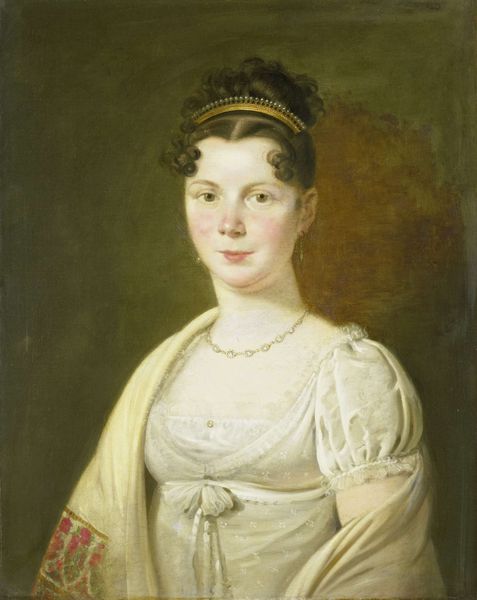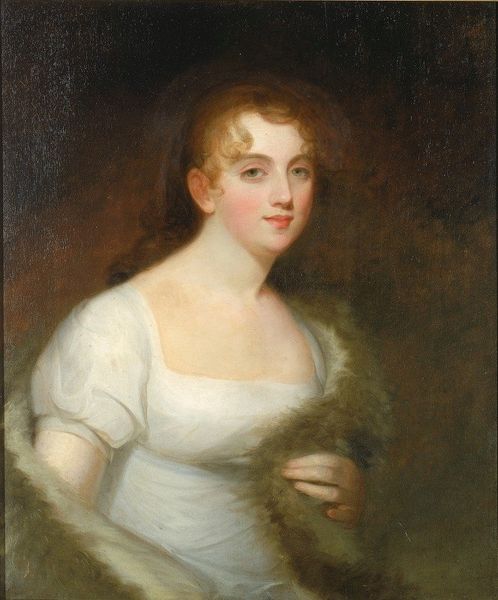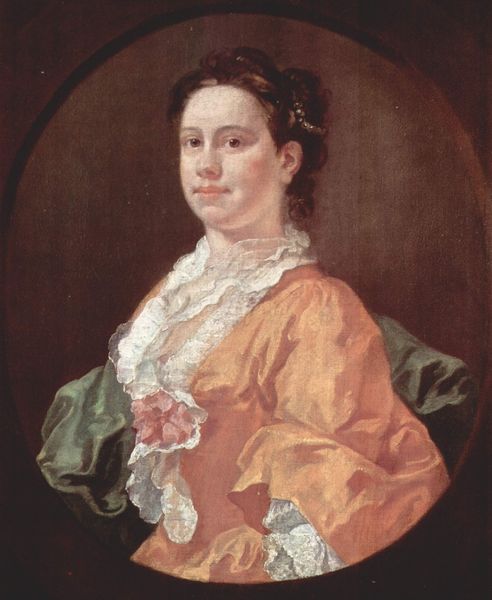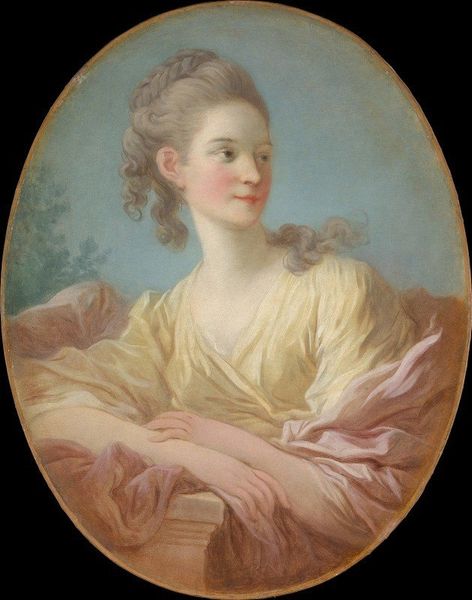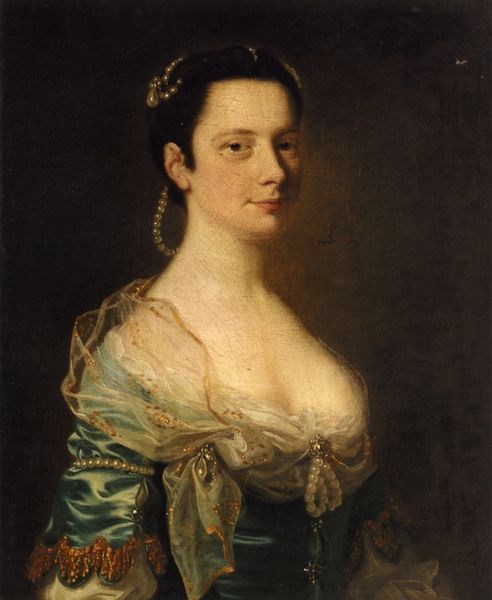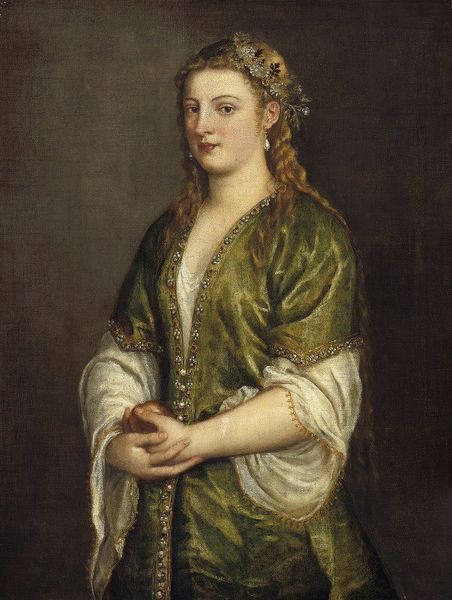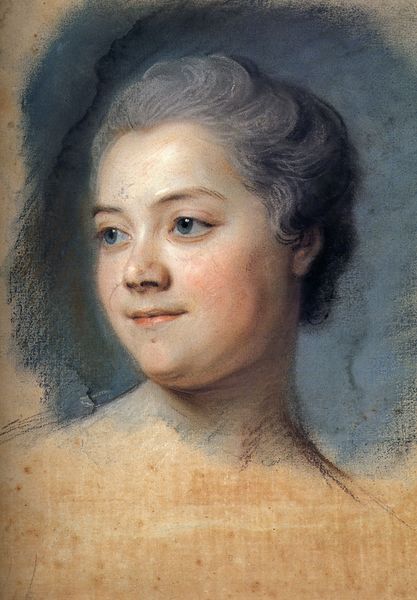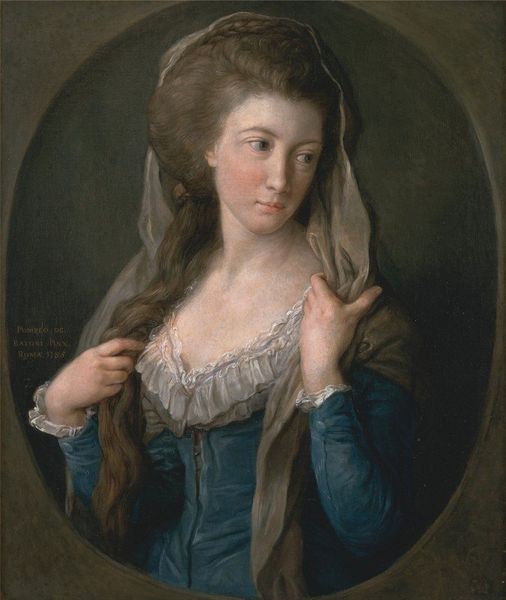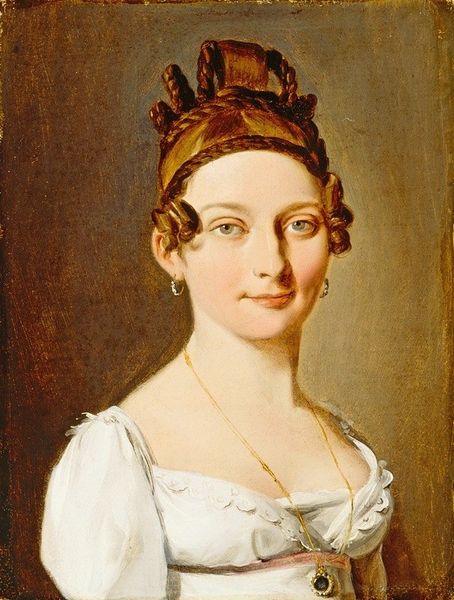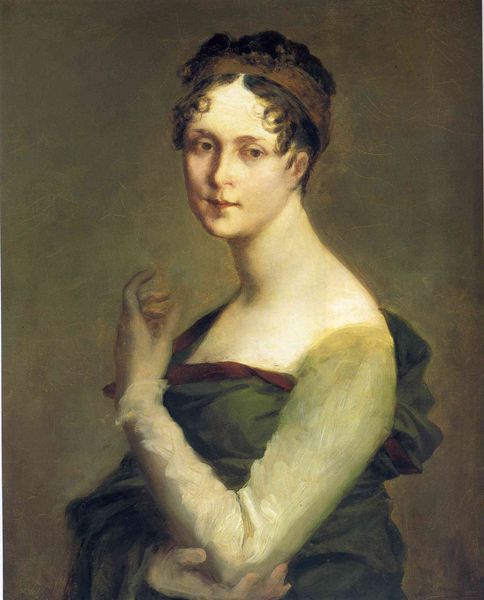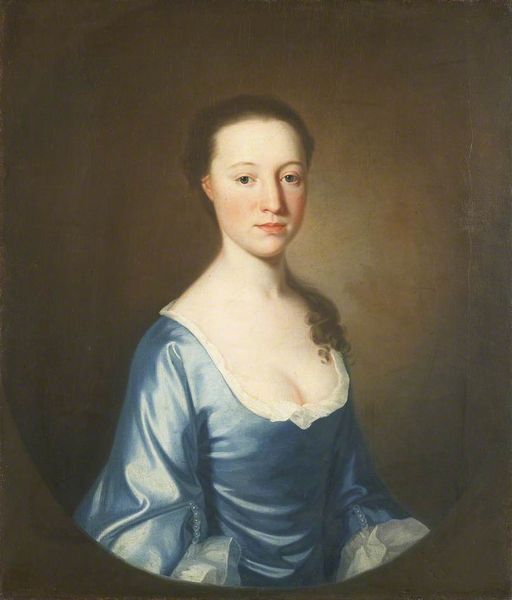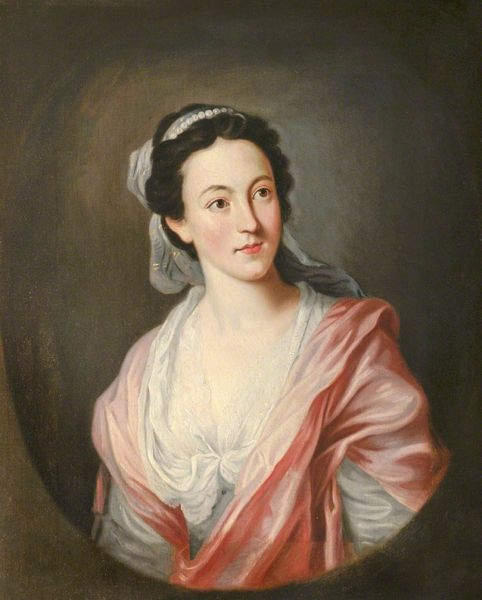
Dimensions: 44.5 x 36.8 cm
Copyright: Public domain
Curator: Let's discuss John Singleton Copley's "Portrait of Mrs. Gawen Brown" from 1763, a piece that offers interesting insight into colonial portraiture. Editor: My immediate impression is one of subdued elegance. The palette is restrained, dominated by a cool blue and soft creams, lending it an air of quiet dignity. Curator: Copley was really establishing himself as the premiere portrait painter of the Boston elite. Patrons sought him out as a status symbol. Displaying their social standing through dress, and commissioning this ensured their presence in the growing public sphere. Editor: Formally, it’s quite straightforward. The composition relies on a classic pyramidal structure, lending the sitter stability. The way Copley renders the textures, the fur trim, the pearls – it speaks to remarkable skill. The subtle glazes create this almost palpable surface quality. Curator: Her clothing indicates that she likely held a prominent social status in Colonial Boston. In an environment of increasingly stark class differences this portrait speaks to the growing economic power being concentrated in the colonies at the time. Editor: I'm struck by her expression. It’s neither overtly joyful nor severe; it almost hints at an emotional reticence. Her gaze doesn't quite meet the viewer's; this is coupled by an almost porcelain like surface quality, giving off a sense of removed stoicism. Curator: That neutrality could also speak to the conventions of portraiture at the time. Think of it as constructing an idealized image for public consumption but also maintaining distance which preserved the sitter's honor in an overtly contentious political and religious environment. Editor: Yes, I find the artist's decision to portray Mrs. Brown so self-possessed even quite subtly defiant to the conventions of painting women at that time. By portraying her as calm, confident, and slightly ambiguous, he avoids both objectification and outright idealization, adding complexity to this portrait. Curator: It's amazing how the seemingly simple surface captures the aspirations and anxieties of the time and Mrs. Brown as one person navigating the ever-shifting complexities of that time. Editor: Agreed, it makes me appreciate how surface presentation reveals a network of emotions that transcends the visual language of painting.
Comments
No comments
Be the first to comment and join the conversation on the ultimate creative platform.
